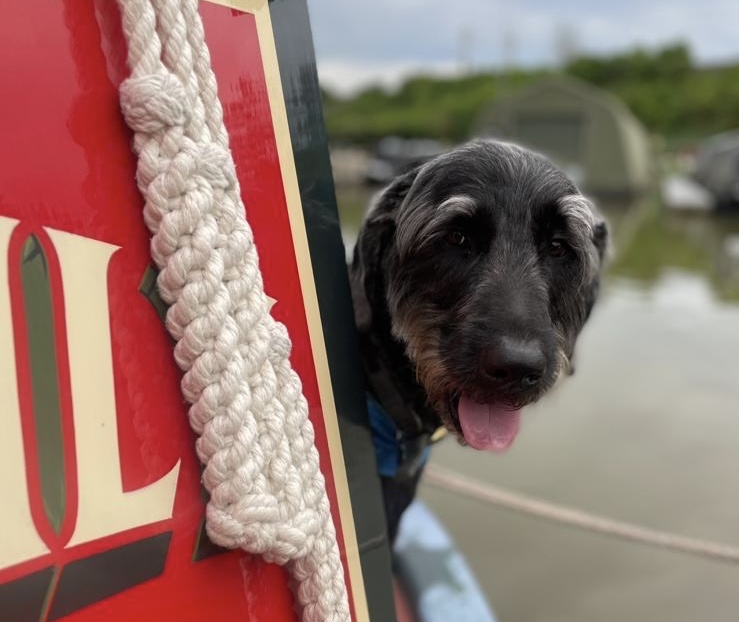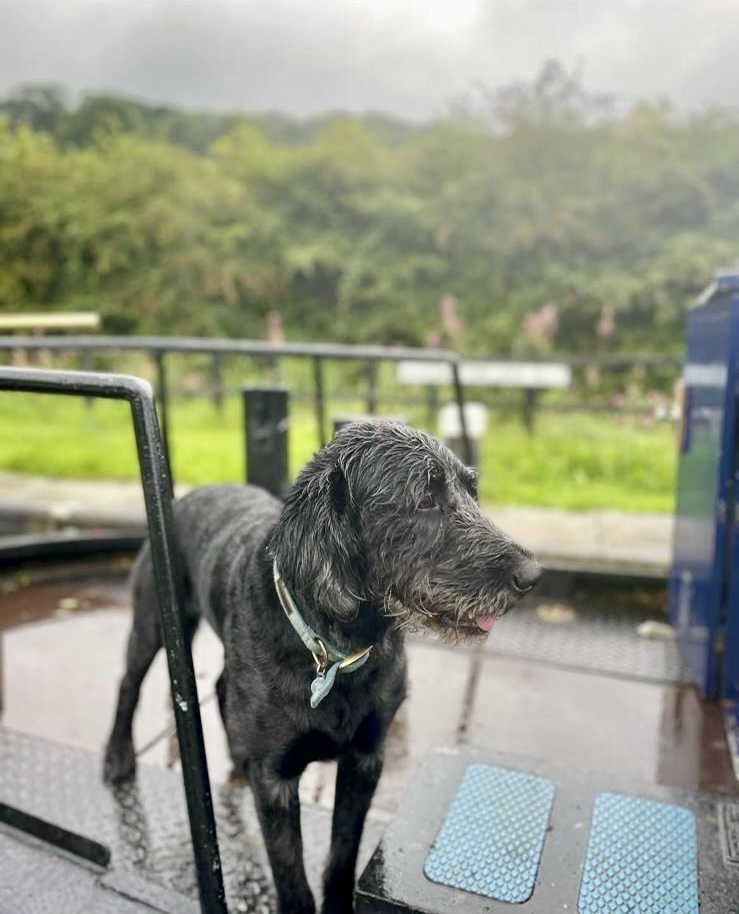
Cruising the canals on a narrowboat is one of life’s most peaceful pleasures—and bringing your dog along can make the experience even more special. With the gentle rhythm of the water, the abundance of wildlife, and the slower pace of life, the canals are a dream for many dog owners.
But narrowboats come with unique risks, especially for four-legged adventurers who may not instinctively understand the dangers of locks, water, or moving boats. So, if you're planning a trip with your pup, here’s everything you need to know to keep them safe, happy, and tail-wagging on the water.
Prep Before You Set Sail
Get your dog used to the boat
Before embarking on a longer journey, spend a bit of time letting your dog get familiar with the boat while moored. Let them sniff around, explore, and get comfortable with the layout. Keep their first few experiences short and positive.
Pack the essentials
Don’t forget:
- A well-fitted canine life jacket (with a handle on the back)
- A lead and harness
- Non-slip matting for slippery decks
- Food, water bowls, and plenty of fresh water
- Towels (wet dogs are part of the experience!)
- Dog-friendly first aid kit
Life Jackets: Not Just for Humans
Even if your dog is a strong swimmer, think about getting a life jacket. Canal water is cold, murky, and often hard to climb out of. A life jacket makes your dog easier to spot and rescue if they fall in—and the handle on top allows you to hoist them out safely.
Choose one with good buoyancy, high visibility (bright colours), and a snug, secure fit. Practice putting it on before your trip so your dog gets used to it.
Supervision Is Key
Never leave your dog unattended on deck
Even calm, well-behaved dogs can suddenly leap after a duck or slip on wet decking. Keep them on a lead in high-risk areas like locks, bridges, or busy moorings. If you're steering the boat, make sure someone else is watching the dog—or keep them securely inside the cabin.
Avoid letting them roam freely near the water
Towpaths can have hidden hazards: fast bikes, anglers, livestock, and other dogs. Use a long-line lead if your dog needs more space but isn’t 100% recall reliable.

Mooring Up: Safety on Shore
When mooring, always check the area before letting your dog out. Look for:
- Broken glass or litter
- Wildlife or livestock nearby
- Slippery or steep banks
- Fast cyclists or narrow towpaths
- It’s also a good idea to teach your dog a “wait” or “stay” command before they leap from the boat to shore.
Locks and Tunnels: High-Risk Zones
These are the most dangerous places for dogs on the canal.
Locks can be deep, with strong currents. Keep dogs well away and always on a lead. Many boaters choose to keep dogs safely inside during lock operations—just make sure they’re not in distress if left alone.
Tunnels can be loud, dark, and disorienting. If you're passing through a long tunnel, it’s best to keep dogs inside the cabin with someone, where it’s quiet and calm.
Training and Recall
Even if your dog usually has perfect recall, the canal throws up lots of distractions—ducks, other dogs, barbecues on moored boats. Practice strong recall and basic obedience commands before your trip. A reliable “come,” “wait,” and “leave it” can prevent accidents and keep your dog safe.
Respect Others on the Cut
Not everyone is comfortable with dogs, and some towpaths are shared with walkers, cyclists, and anglers. Keep your dog under control, clean up after them, and respect quiet moorings where others may be relaxing.
Watch for Heat and Cold
Narrowboats can get very warm inside on sunny days and very chilly at night in autumn.
Make sure your dog is comfortable:
- Use fans, ventilation, and shade in summer
- Bring a cosy bed or dog blanket for cooler evenings
- Always provide access to fresh drinking water
Emergencies: Be Prepared
Know how to respond if your dog falls in:
- Stay calm
- Call them toward the bank or boat steps
- Use the handle on their life jacket to lift them out
- Don’t jump in after them unless it’s absolutely safe to do so
- Also, know where the nearest vet is along your route, and consider insurance that covers water-based travel or holidays.

Let Them Enjoy It
Most importantly—make it fun for your dog! Let them explore, sniff new smells, meet other boaters (and dogs), and enjoy regular breaks for walks and play.
A cruising holiday can be one of the most rewarding bonding experiences you and your dog can share. With a little planning and some basic safety precautions, your narrowboat can become your dog's floating paradise.
Final Bark
Life on the canal is slow, scenic, and full of wonder—and it’s even better with your best furry friend aboard. Stay safe, stay aware, and you’ll both have an unforgettable adventure together.
Happy cruising!